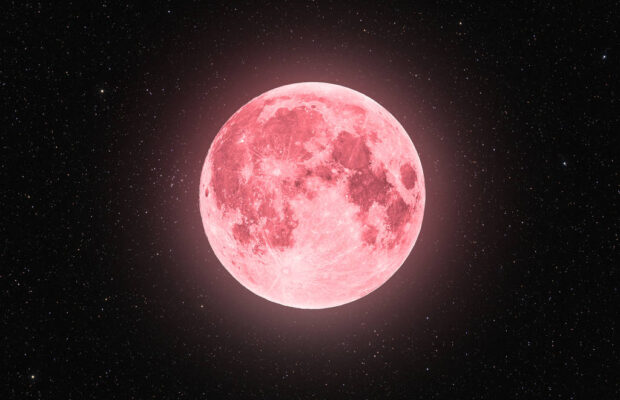Heavenly fans enjoying recent celestial shows

Unlike last year, there will be no total solar eclipse this April. But that doesn’t mean there aren’t other fun unique events in the sky this April. The next full moon, a pink moon, will appear on April 12 according to TimeandDate.com. The pink moon gets its name from the brightly colored pink phlox wildflowers that bloom across North America in early spring. It can also be called a paschal moon, which can be used in religion to determine Easter with the first full moon on or after March 21. Paschal moon dates range from March 21 to April 18, all according to TimeandDate.com.
Astronomy student leader Mattea Sink talked about the science behind the pink moon. “When the moon is near the horizon, its light has to travel through more of Earth’s atmosphere before reaching our eyes. Because of Rayleigh scattering, shorter wavelengths of light (blue and violet) are scattered out, while longer wavelengths ( red, orange and yellow) pass through. That’s why the moon can sometimes appear reddish, orange, or even golden when it rises or sets.”
Prior to the upcoming Pink Moon, a total lunar eclipse occurred on March 13–14. seventh grade Moon gazer Ashton Jurries said, “I’m looking forward to the pink moon, and most importantly seeing if I can get a clear picture of it, so hopefully the sky is clear. I stayed up late on the first day of spring break to go with my siblings to CF high school to see if the moon was so red I could actually call it a blood moon. This event was visible across parts of the United States, Europe, Asia, Australia, South America, Pacific and Africa and turns out these are pretty common and happen like two times a year. At midnight that night I could see a cast starting to cover the moon slightly, and I looked up the total lunar eclipse progress and kept myself up to date until the moon was 78 percent covered, then we left for the school. That night the moon was actually higher than it normally is. This created difficulty when trying to get a picture. I stayed up till 1:45 a.m. and didn’t want to leave till I got a good picture just in time.”
The astronomy club hosted an event sighting at the high school that night to view the lunar eclipse the night of March 14 and unexpectedly had a big turn out. Sink said, “We were blown away by the enthusiasm and it’s amazing to see so many people come to support the club.” For observers in Cedar Falls, (Central Daylight Time), 7:22 p.m. local time the moon will rise just after sunset and remain visible throughout the night on the evening of April 12. Gather with friends or family, snap a photo of the full moon, grab a cozy blanket, some snacks and enjoy the view under the stars. The best viewing experience will be away from city lights, to ensure the best view possible. Happy moon-watching.









You must be logged in to post a comment Login